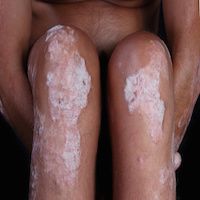Article
Obesity May Exacerbate Psoriatic Arthritis Risks, Limit TNFI Effectiveness
Author(s):
Analysis of patient records from Denmark and Iceland found that obese psoriatic arthritis patients responded less than their lighter counterparts to tumor necrosis factor inhibitors (TNFIs) and that they used such medications for shorter periods of time.

Analysis of patient records from Denmark and Iceland found that obese psoriatic arthritis patients responded less than their lighter counterparts to tumor necrosis factor inhibitors (TNFIs) and that they used such medications for shorter periods of time.
Investigators searched registries and found body mass index (BMI) data for 1,271 psoriatic arthritis patients. The cohort included 408 (32%) obese patients (those whose BMIs exceeded 30 kg/m²). The median follow-up time was 1.5 years (interquartile range [IQR], 0.5-3.9 years).
At baseline, obese patients had significantly higher disease activity that other patients. Their mean disease activity score (DAS) was 4.6 (± standard deviation of 1.2) compared to a mean DAS of 4.4 (± 1.2) for non-obese patients. Obese patients also had higher levels of C-reactive protein (median, 9 mg/l; IQR 5—19mg/l vs median, 7 mg/l; IQR, 3–18 mg/l) and scored higher on the visual analogue scale-pain (mean, 66 mm; IQR, 48–76 mm vs mean, 60; IQR, 38–74 mm) than non-obese patients.
After each patient’s initial 6 months of treatment with a particular TNFI, a good or moderate response as defined by the European League Against Rheumatism was achieved by 55% of obese and 65% of non-obese patients (P = 0.02). Even after multivariate analysis that controlled for potential confounders, obesity was associated with a significantly decreased chance of a good or moderate response (odds ratio [OR], 0.47; 95% confidence interval [CI], 0.29-0.72).
Mean TNFI adherence was 2.5 years (95% CI, 1.7-3.2 years) among obese patients and 5.9 years (95% CI, 4.1-7.7 years) in non-obese patients (P < 0.01). Once again, the relationship survived multivariate analysis: the hazard ratio of TNFI withdraw for obese patients compared to non-obese patients was 1.6 (95% CI 1.3-2.0).
“The impact of obesity was significant across genders, TNFI types and nationality,” the study authors wrote in Rheumatology. “Obesity was associated with higher disease activity and seemed to diminish response and adherence to TNFIs in psoriatic arthritis.”
Some previous research has linked psoriatic arthritis and obesity.
An analysis of British medical records looked at the 976 (out of 75,395) psoriasis patients who developed psoriatic arthritis between 1995 and 2010. Obese psoriasis patients were more likely than their non-obese counterparts to develop psoriatic arthritis (odds ratio [OR], 1.22; 95% confidence interval [CI], 1.02-1.47). Morbidly obese psoriasis patients (those with BMIs above 35 kg/m2) were even more likely than non-obese patients to develop psoriatic arthritis (OR, 1.48; 95% confidence interval [CI], 1.40-1.81).
The Nurses Health Study II also found that the risk of incident psoriatic arthritis also increased steadily as patient weight increased from normal: overweight OR, 1.83; 95% CI 1.15-2.89 to obese OR, 3.12; 95% CI, 1.90-5.11 to morbidly obese OR, 6.46; 95% CI, 4.11-10.16).
Prior research has also found that obese psoriatic arthritis patients do not respond as well as non-obese patients to TNFIs. A study that compared outcomes in 135 obese psoriatic arthritis patients and 135 normal weigh psoriatic arthritis patients found that obesity was associated with a risk of not achieving minimal disease activity (HR, 4.90; 95% CI, 3.04-7.87; p<0.001).
Related Coverage:
Study Endorses Early TNF Use in Patients with Psoriasis
Racial, Healthcare Disparities Associated with Hospitalization for Psoriasis





